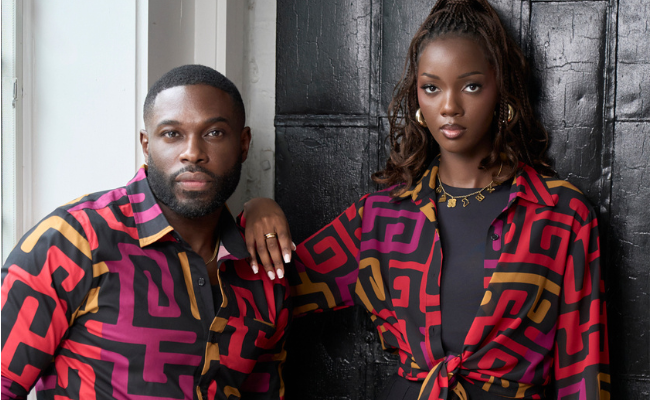Coming to America 2: Laughter, Love, and High Fashion Again
Coming to America 2: Laughter, Love, and High Fashion Again
In 1988, representation of Black characters on film and television were quite limited. Coming to America provided a different view of Black characters and their potential. For the first time, people in the United States and around the world saw a positive picture of people from Africa on the big screen. With its timeless romance and hilarity, Coming to America cemented its place as an iconic film for the Black community in the US and worldwide, all while rocking amazing royal fashion.
Today, the film and TV world as a whole understands the film much better. With legends such as Eddie Murphy, James Earl Jones, and Madge Sinclair, the film was bound to be a success. Not only were the characters endearing and beautifully flawed despite their sense of regality, the film itself allowed Eddie Murphy and Arsenio Hall to play various diverse characters and showcase their talents in new and different ways. Let’s look at how the film impacted the community.
Legendary jingles
Soul-Glo, a fictional product, had its own jingle and became famous in its own right. Some of the songs in the film’s soundtrack became hit singles. You’ve probably rocked to “That’s The Way It Is,” by Mel and Kim. With its catchy 80s beat, the song became a staple in dance clubs across the country and the truth is—it still rocks!
It inspired people around the world
Coming to America may have made an impact on Black people around the world, but other cultures have also taken inspiration from its message of love, family, and adventure. There are not one, but two Indian remakes of the film. The Tamil Language My Dear Marthadan and Telugu-language Raja Vikramarka are both based on this seminal 1988 film.
Like the original film on which they are based, their main protagonists are male princes who seek out true love. A Hong-Kong version of the film also exists. It’s called The Fun, The Luck, and The Tycoon and stars the legendary Chow Yun-fat as a rich son of a wealthy family.
A different view of Black fashion
During a time when politicians and other pundits looked at Black culture-makers in an unfavorable light, Coming to America fused the fashions of the time with its own powerful African aesthetic. African prints, royal fashions, and statement-making pieces ruled the set in a way that felt dignified and natural. Finally, Black viewers in the United States were able to see themselves on the big screen wearing clothes that alluded to their ancestry while discussing issues that are timeless.
Why we’re hyped about the sequel
Much has changed since Coming to America won our hearts over in 1988, but many things haven’t. The past few years have brought about a resurgence in 90s nostalgia, a stronger desire to connect with one's roots, and have shed light on inequalities Black people still face today. Let’s face it: seeing Black royals on the screen would be a completely welcome sight, and we know we can depend on Eddie Murphy to make us and our families have a good laugh.
Only the best
At the time of its release, Samuel L. Jackson was a little-known actor who was just getting started in bigger films. He has a small part in the film and look at him now. And though we know James Earl Jones and Madge Sinclair already had some great credits when Coming to America came out, their stint as African royals was so great that it’s no wonder Disney tapped them to voice Mufasa and Sarabi in the Lion King. Who better to run Pride Rock than the ones who ran Zamunda?
Watch Coming to America 2 on Amazon Prime, March 5th!




















Leave a comment
This site is protected by hCaptcha and the hCaptcha Privacy Policy and Terms of Service apply.